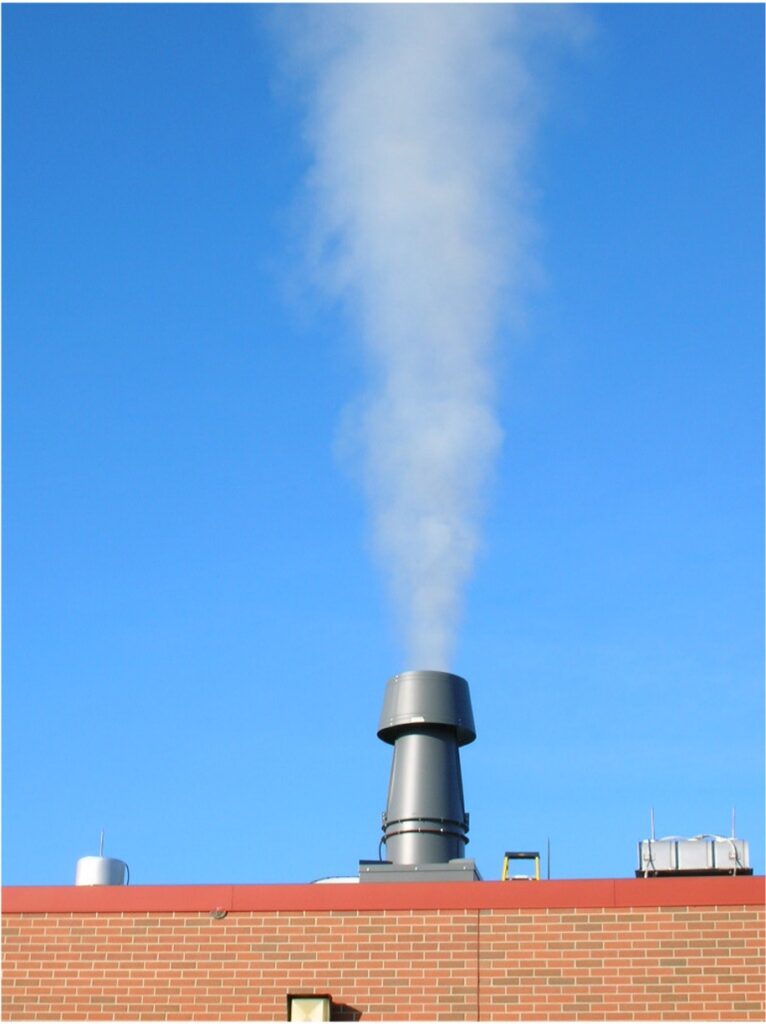Diesel Exhaust
Diesel generators are typically utilized to provide emergency power during an outage. The result of utilizing these units is an extremely high temperature exhaust that contains pollutants not recommended for close proximity buildings. A way to dilute and remove these exhaust from the area of interest is with a Strobic Air exhaust fan application. The diesel exhaust fan system can be selected as either standard high temperature applications or as diluted high temperature applications. The diesel exhaust systems require a soft connect for the inlet duct, which allows for a selection of 0.25” WG as the inlet performance condition. This requires the inlet duct work to run into either the side inlet rain hood or the bottom inlet opening. In both cases, the inlet duct work is not directly connected to the inlet of the fan system plenum The reasoning behind this is to allow the inlet exhaust temperature to be diluted with ambient air to reduce the mixture temperature, as well as to not create any potential back pressure onto the diesel generator itself.
For standard high temperature applications, both the fan and plenum materials/components will need to be coated with the high temperature coating. In addition to the coating, the components of both the fan and plenum will need to be constructed of high temperature capable materials. Plenum doors are only rated for 300°F so these are not supplied on high temp applications. The preferred method for diesel exhaust is through a diluted high temperature application. In this scenario, the fan materials and coating are standard as per a regular fan system. However, the plenum materials and coating will be designed as high temperature. In this application, large amounts of ambient bypass air are drawn into the plenum through the bypass openings in order to dilute the inlet air temperature to below 200°F. There are no bypass dampers on the bypass openings on these plenums in order to maximize the amount of available ambient air to draw into the plenum.

